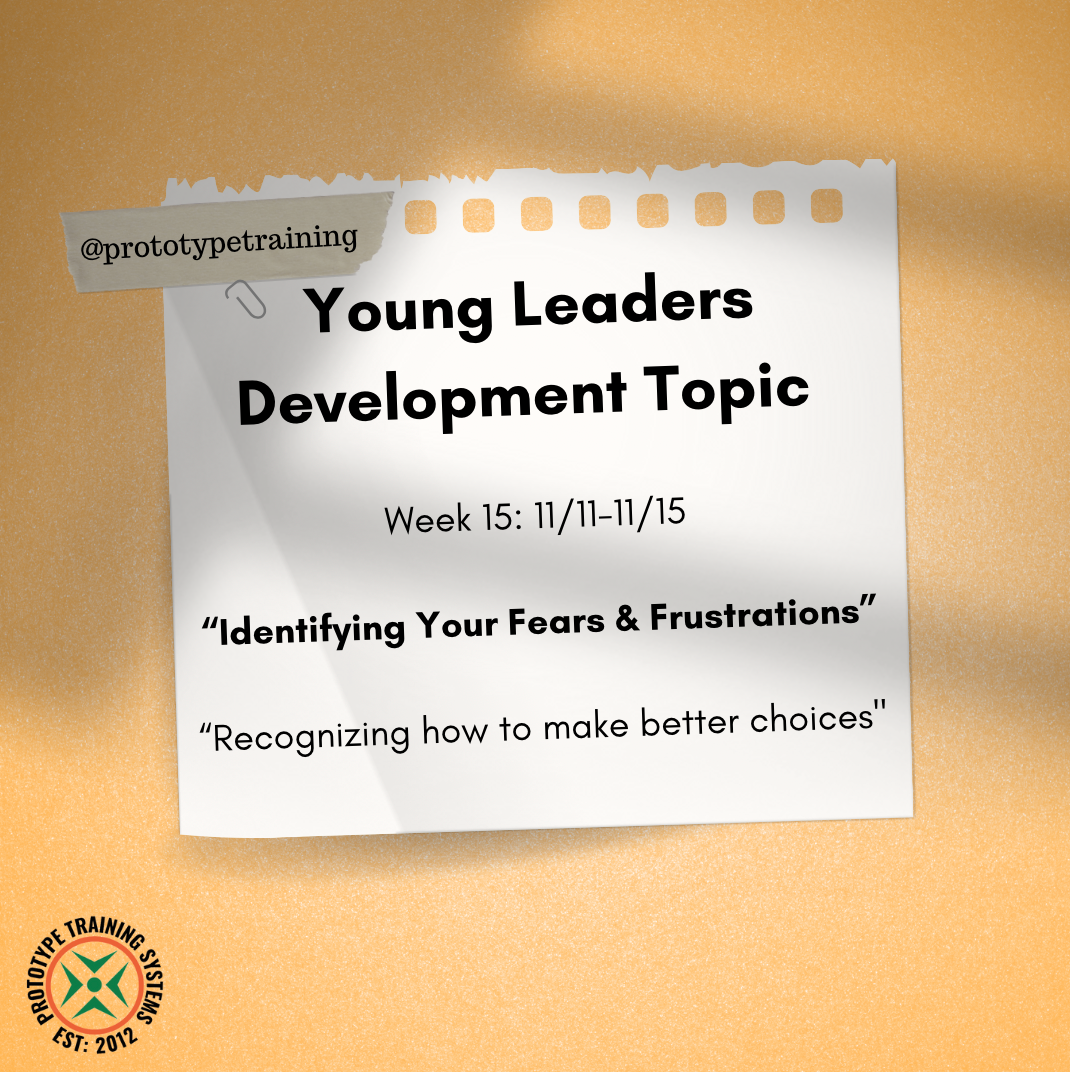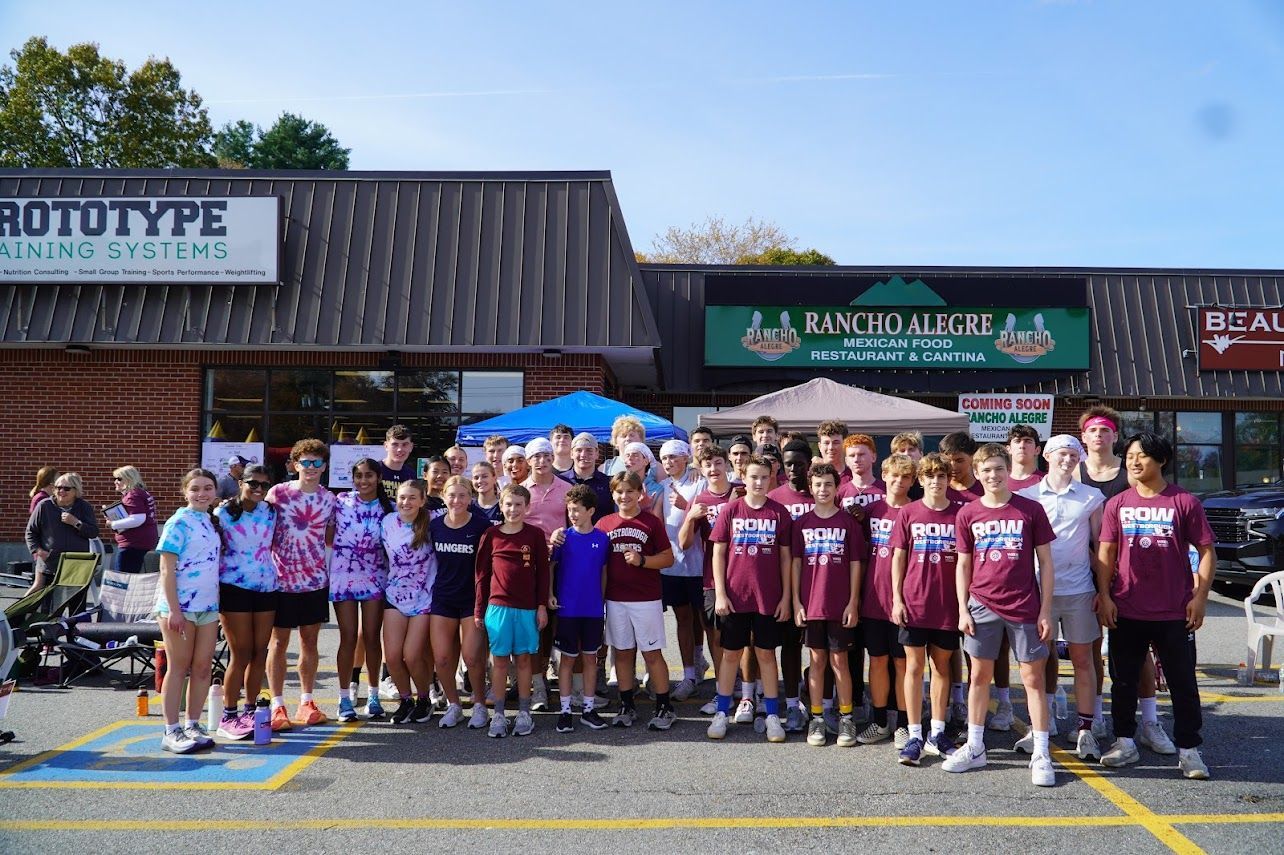Developing Young Leaders: Identifying Your Fears & Frustrations
Mike Collette • November 15, 2024
Identifying Your Fears & Frustrations

Identifying Your Fears & Frustrations
Last week, we explored self-drive and how it is a trainable skill. This week, we started to scratch the surface of how fear and frustration affect how we think and how we take action. When we make decisions from a place of fear or frustration, those decisions are often poor. So, how do we get out of that mindset and allow ourselves to think more creatively and make better choices? It’s a skill that requires practice, but the first step is to take a step back and identify what our default tendencies are when we feel frustrated or fearful.
In this week's LTAD sessions, we did some CDC (Cross-Domain Coaching). We created a simple game designed to generate low levels of frustration, and we tracked when and how that frustration emerged. This exercise helps build awareness of their default tendencies and hopefully helps them recognize similar behaviors in other areas of their lives.
Here are some quotes that came up during the game:
- After getting 0 points on the first 2 turns:
"I hate this game."
- After scoring 6 points on the next turn: "Only goal is not to come in last."
- After scoring 0 points on the first 3 turns: "I'm not trying."
- After scoring 7 points on the last turn: "If I did this every round, I would have won."
These comments aren’t groundbreaking, but they show how, when faced with early struggles or failure, the kids can quickly shift into frustration and blame the environment.
You might be wondering, how does all of this tie back into the self-drive work we did last week? One thing we’re seeing is that, in areas where we have self-drive, we tend to reduce fear and frustration more quickly. It doesn’t stop us from taking action, and we can make better decisions as a result. Understanding our tendencies when fear and frustration appear—and recognizing how they differ in areas where we feel driven—is key to making progress.
In today’s class, we’re experimenting with adding video games into the workout to see how we can dial up competitiveness and observe how frustration affects performance.
Previous Blogs

Devon is a fantastic part of our community — always kind, coachable, easy-going, and consistently putting in the work. She shows up, supports others, and truly represents what PTS is all about. Prototype of the Month is well deserved! Below, she answers a few questions about her time at PTS. 1.) Share your experience at Prototype After what felt like an entire year of sitting during grad school, I knew I wanted to be more active. I came back to Prototype, and it was the best decision. I’ve made so many new friends here who make every class fun (no matter how tough the workout is) but my favorite moment has to be meeting my boyfriend Ed! 2.) What is your favorite part about being at Prototype? I used to do at-home workouts and always felt like something was missing. When I came to Prototype, it felt like I finally found that missing piece, the community! It truly makes a huge impact. Everyone here genuinely wants the best for you. 3.) What are your hobbies and activities? If I’m outside, I love playing pickleball, skiing, and going for walks. And if I'm inside I enjoy crocheting, reading, or baking! 4.) How has Prototype helped you or solved a problem for you? Prototype has shown me that if you put your mind to something, you can truly do hard things. I also know I will always feel better after going to the gym. Sometimes the hardest part is just getting in the car, but I never regret it once I’m there. 5.) What are you continuing fitness goals to this point? To get some form of movement everyday and to one day get a pull up. 6.) Favorite Quote “Laughter is timeless, imagination has no age, dreams are forever.” -Walt Disney

Tim has been an incredible part of our community — always positive, funny, generous, and willing to help. His energy makes everyone around him better. Prototype of the Month is well deserved! Below he answers some questions about his time at PTS. 1.) Share your experience at Prototype This actually isn’t my first stint at Prototype - I’ve been around and worked out here a few times in my heyday. My very first legitimate class though, as a member, was 5am earlier this year and I was welcomed first by Nicole. You can all imagine how that interaction went… and I came back! Prototype is welcoming, fun, clean, and I’ve made amazing friends along the way. It is one of the best hours of my day. 2.) What is your favorite part about being at Prototype? Prototype is not just another workout but a mental reset for me, it fills my cup. 3.) What are your hobbies and activities? Activities mostly involve time with my family outside whenever we can, trips to Ptown and traveling all over for work. I have a hard time sitting still and typically keep a busy schedule. Mix in photography and interior design opportunities with fitness and family and I’d say that's my perfect mix. 4.) How has Prototype helped you or solved a problem for you? I work remotely so in person face to face conversation is something I’ve found I need for my mental health. I’m also super competitive so I tend to push a little harder when I workout with others. 5.) What are you continuing fitness goals to this point? I want to be a parent who can show up for their kids in every aspect of life, which also means physically. Staying fit is important to be able to keep up with them as we collectively get older. I am training for a few Hyrox races coming up but mostly just trying to maintain my current level of fitness for as long as possible. 6.) Favorite Quote “There is only one success - to be able to live your life in your own way” -Fortune Cookie
Climb to New Heights
Prototype Training Systems is more than a gym - it is a lifestyle. Join us today!


